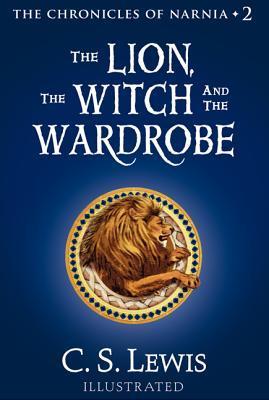The Lion, the Witch and the Wardrobe (Chronicles of Narnia, #1)
Title: The Lion, the Witch and the Wardrobe (Chronicles of Narnia, #1)

Author: C.S. Lewis
Published in: 1950
Date read: 2nd November 2004
Score: 4/5
Genre: Childrens' fiction, Fantasy, Classic
Plot: (Warning, may contain spoilers):
"The Lion, the Witch, and the Wardrobe," published in 1950, is the most famous and chronologically the first published novel in C.S. Lewis's beloved "The Chronicles of Narnia" series. It's a classic of children's fantasy literature, brimming with magic, adventure, and allegorical themes of good versus evil, sacrifice, and redemption.
The story begins during World War II, when four siblings—Peter, Susan, Edmund, and Lucy Pevensie—are evacuated from London to the safety of an old country house. During a game of hide-and-seek, the youngest, Lucy, discovers a magical wardrobe that serves as a secret portal to a snow-bound, fantastical land called Narnia.
Upon her first visit, Lucy meets Mr. Tumnus, a kind faun who reveals that Narnia has been under the spell of the White Witch for a hundred years, ensuring it is "always winter and never Christmas." When Lucy tells her siblings, they initially disbelieve her, especially the cynical Edmund.
During his own secret visit to Narnia, Edmund encounters the White Witch herself. She tempts him with Turkish Delight and promises him power, subtly poisoning his mind and turning him against his siblings. Eventually, all four children stumble into Narnia together.
They soon learn of a prophecy: that two Sons of Adam and two Daughters of Eve will eventually sit on the four thrones at Cair Paravel, breaking the Witch's power. Their arrival, alongside the growing signs of spring, heralds the imminent return of Aslan, the great and majestic lion, who is the true King of Narnia and a symbol of ultimate good.
The children become central figures in the unfolding conflict. Edmund, seduced by the Witch, betrays his siblings, leading to a perilous journey and his capture. Aslan's return brings hope and a powerful force against the Witch's tyranny. However, ancient magic dictates that a traitor's life is forfeit. To save Edmund, Aslan makes the ultimate sacrifice, offering his own life to the Witch on the Stone Table.
The climax involves the epic battle between Aslan's forces and the White Witch's army, a struggle for the very soul of Narnia. Through courage, loyalty, and the power of love, the Pevensie children play their part, leading to the defeat of the White Witch and the restoration of Narnia's rightful glory, marking the beginning of a golden age under their rule as kings and queens. "The Lion, the Witch, and the Wardrobe" is a timeless tale of wonder, adventure, and profound moral lessons.
Comments:
I didn't read these until I was almost 30, I rectified this and later read them to my children before they could have missed out like I did. The benefit of reading them later, however, was seeing the profound lessons and close symbolic links to the creation in the Bible. Thoroughly enjoyed them all. I later enjoyed the film version released in 2005.
Books that we've read by C.S. Lewis (7):
The Lion, the Witch and the Wardrobe (Chronicles of Narnia, #1) (1950), Prince Caspian (Chronicles of Narnia, #2) (1951), The Voyage of the Dawn Treader (Chronicles of Narnia, #3) (1952), The Silver Chair (Chronicles of Narnia, #4) (1953), The Horse and His Boy (Chronicles of Narnia, #3) (1954), The Magician's Nephew (Chronicles of Narnia, #6) (1955), The Last Battle (Chronicles of Narnia, #7) (1956)
This page was updated on: 12th August 2025

